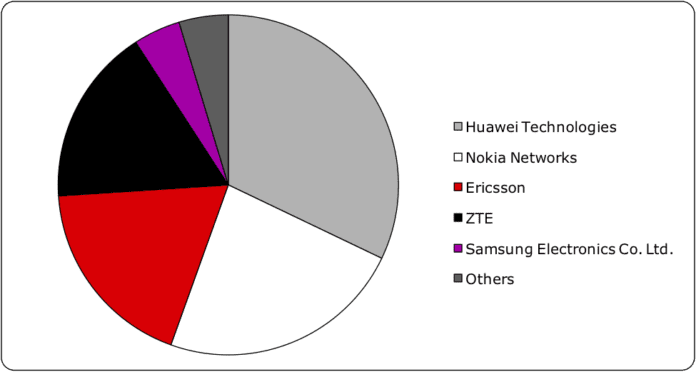Ericsson has completed a SEK 500 million ($52 million) overhaul of its Nanjing factory in China, where it produces LTE (4G) and 5G gear, to create what it claims to be “among the most advanced” manufacturing facilities in the world.
The new factory upgrade, covering IoT connectivity and AI data tools, in China follows parallel initiatives in Europe and the US. The design will be aped in further factories around the world, notably in Brazil, to accelerate the company’s flow of 5G gear into global markets.
Ericsson’s Nanjing factory produces LTE and 5G radio equipment for the Chinese market. It said the 18-month upgrade makes make(s) Industry 4.0 a reality”, bringing higher levels of automation and intelligence to its operations.
It will fast-track new 5G radios in a modular and flexible production setup for rapid deployment of 5G in China. “Every step of production [has been] modernised, [with] cellular IoT, Industry 4.0 and AI tools and technologies implemented,” it said.
In a statement, it ran through the various components of the factory overhaul. An automatic packing line, wrapping up 4G and 5G products, has been running since the second quarter of 2019.
More efficient 5G testing equipment has been deployed, allowing quality to be checked and products to be introduced to the market faster. AI is being used to recognise components in the production line, increasing efficiency, accuracy and quality.
Cellular NB-IoT sensors at 45 work stations alert factory operatives to critical issues and faults, and, again, bring new speed of the production system.
The upgrade of the Nanjing plant follows parallel smart factory initiatives at the Swedish vendor’s manufacturing facility in Talinn, in Estonia, and at a new site in the US. The three venues cover accelerated delivery of LTE and 5G radio components in Asia, Europe, and the US, respectively. Each site incorporates a modular and flexible production setup.
Ericsson and Telia have brought automated guided vehicles (AGVs), augmented reality (AR), and IoT sensors into action in Tallinn, sprung on a dedicated cellular network. The Tallinn supply venue is one of Ericsson’s largest. The new private industrial cellular network in Talinn delivers the capacity and control to scale and secure manufacturing operations, said Ericsson.
The brand new facility in the US, opening in 2020, will also build 5G radios. The factory will use industrial 5G for connecting machines and sensors to edge compute and cloud analytics programmes, to enable near real-time data processing, remote control, and low-latency industrial applications.
Ericsson cited applications including automated warehouses, connected logistics and automated assembly, packing and product handling, and the use of autonomous carts. The Swedish vendor said the facility, featuring automated operations and modular production, will slot into its global supply chain, and help it to serve its various customers locally, making deliveries “fast and agile”.
The company’s major upgrade of its supply chain in key markets is focused on more rapid production and delivery, as well as more localised research and development work. Ericsson is also “fast-tracking” new smart manufacturing capabilities in Brazil.
Fredrik Jejdling, executive vice president and head of business area networks at Ericsson, called the new Nanjing factory upgrade “another important milestone” in the company’s “supply readiness for 5G”.
“Our factory in Nanjing is a great example of how our next-generation technology is changing the future of manufacturing for the better. As a global company, we have gained insights from testing and applying 5G technology for industries and now we are bringing the learnings into our own factories, which will benefit the whole ecosystem,” he said.
“Our customers in China will benefit through the technology leadership, speed and capacity advantages that our automated smart factory will give us.”

